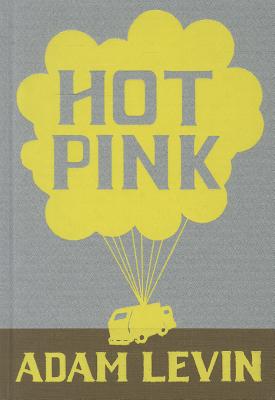
Hot Pink
by Adam Levin
McSweeney’s; 256 p.
Adam Levin’s mammoth The Instructions was memorable not only for its size but for the number of levels on which it worked. Most notably, it evoked over its thousand-plus pages a complex series of conflicts relating to relationships, families, faith, and education, while also incorporating multiple (sometimes unreliable) narrators, textual experimentation, and metafictional riffs on the dilemma of translation. Did I mention that it’s also a deeply readable story, an unlikely coming-of-age narrative with a remarkably sweet relationship at its core? Because that didn’t hurt things, in terms of its readability.
For his debut collection Hot Pink, Levin’s concerns are largely different. While many of these stories, like The Instructions, focus on young adults, their tone is more modest: the uneasy friendship of two teens in an Italian-American neighborhood, or an unsettling romance born of the meeting of two members of an anger-management group. Fans of The Instructions’ word-based diagrams will note the presence of some textual games here, notably in “Considering the Bittersweet End of Susan Falls.” This story briefly incorporates the title character’s notes for an assignment, and also is structured so that the story begins with a chapter number well over 130,000. (In a recent Q & A, Levin suggested that he was evoking an excerpt from a novel scaled to cover every aspect of this character’s life.) Sometimes, Levin’s endings opt for the stylistic flourish. In the case of the generational scale that he suddenly shifts into for “Scientific American,” it’s capable of producing a sense of awe. The nod to a certain famous last sentence doesn’t work nearly as well in “Jane Tell,” however — it’s a knowing literary wink to close out a story that had previously felt entirely immersive.
At times, Hot Pink seems arranged to demonstrate Levin’s versatility: opener “Frankenwittgenstein” is overtly satirical, with an eye on technology and consumerism. (Specifically, the narrator’s father is consumed by his obsession with creating a particular kind of biologically accurate children’s toy.) Elsewhere, he takes on a more realistic tone; even “Scientific American,” despite one largely inexplicable image at its center, finds its characters operating on recognizably human ground even as they react to the surreal. Though even in a collection in which Levin’s work appears at varying lengths, he seems most assured with the largest canvases, relatively speaking. “Jane Tell” and “Finch” each tell moving stories laced with irrationality and violence (both physical and emotional), while also suggesting even deeper histories left off the page. While it’s an occasionally bumpy ride, Hot Pink helps establish Levin as a writer whose abilities are equally well-served by page counts below 100.
Follow Vol. 1 Brooklyn on Twitter, Facebook, Google + and our Tumblr.
